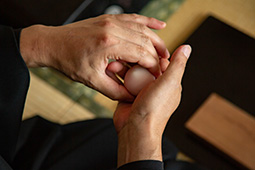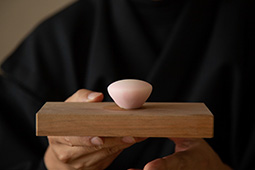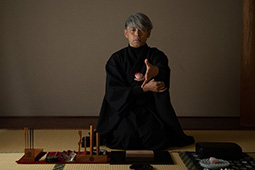Home > Highlighting JAPAN > Highlighting Japan September 2019 > Celebrating Diversity in Culture
Highlighting JAPAN
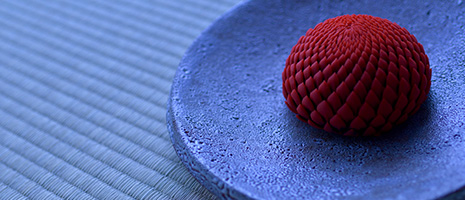
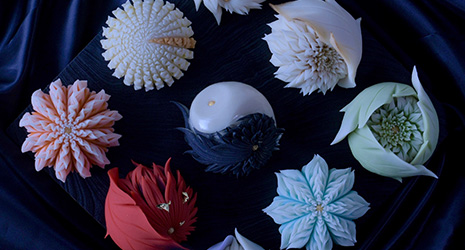
Wagashi as Performance Art
Junichi Mitsubori has taken the traditional Japanese sweets known as wagashi and elevated them into an art form.
Junichi Mitsubori, the third-generation owner of Wagashi Izumiya, a traditional Japanese sweets store in Yokosuka, Kanagawa Prefecture established in 1954, is self-styled as Japan’s only “wagashi artist.” Kado, the “art of wagashi,” goes beyond simply serving wagashi; it incorporates the physical actions both of creating the sweets and of serving them as a means of entertaining guests. To promote kado, Mitsubori established the Kado Ichika-ryu style in 2016.
“Like the beauty of shadows or the beauty of empty space, wagashi have a beauty that channels a Zen-like spirit. To allow those qualities to be experienced through all the senses, Ichika-ryu involves making sweets right in front of the guest, similar to the format of a traditional Japanese tea ceremony,” explains Mitsubori.
What Mitsubori presents is a type of unbaked sweets known as neri-kiri, made from boiling beans, filtering the bean paste, adding sugar and a thickener based on glutinous rice, kneading the mixture, and crafting the resulting dough, usually in ways that reflect the seasons. Just as any movement can be recognized as art, so the sight of beautiful and mysterious wagashi being created within Mitsubori’s hands transports those watching into a different time and space.
From tea rooms to tea utensils, hanging scrolls and Japanese flower arrangements, the art of the Japanese tea ceremony is connected with a wide array of artistic culture and is often referred to as composite art for this reason.
“During a tea ceremony, the tea master tells the story of the items used in the ceremony, such as the teacups, and those who made them. Wagashi, however, are only introduced by the name of the store. Wagashi is also an aspect of Japanese culture we can be proud of. I think the artisans making them should also have some individuality,” says Mitsubori.
After taking over Wagashi Izumiya from his father at age 27, Mitsubori wanted to expand the world of wagashi as an art form as well as a food. Up to that point, the business had been striving to grow into a major manufacturer, but Mitsubori reversed course and downsized instead, choosing a path representing the pursuit of creativity.
To date, Mitsubori has delivered Kado Ichika-ryu performances in more than ten countries around the world.
The creation “Spring Breeze” mimics cherry blossom petals through a traditional, clear-cut design passed down from his father. With “Goldfish,” meanwhile, Mitsubori uses new utensils developed in conjunction with an artisan woodworker to trace dynamic lines never before seen in wagashi. Then there is “red chrysanthemum petals,” a creation that has become synonymous with Ichika-ryu, where the petals are stacked one at a time in multiple layers with dynamic movements to rise up energetically. When these fine aspects of craftsmanship rise up on the pure dough, the venues erupt in cheers. But the next moment, when the guests destroy the completed sweets in order to eat them, the cheers morph into screams.
“A common question posed to me is why I would make such a beautiful work of art out of food. But the beauty of wagashi lies precisely in the fleeting nature of something destined to lose its shape. This overlaps with ourselves as we live out our own limited existences, and I think that is moving to people,” he says.
Mitsubori’s performances attract high praise all over the world. In 2017 at Salon du Chocolat Paris, the world’s largest chocolate festival, Mitsubori was invited by Japanese pâtissier Hironobu Tsujiguchi to deliver a performance, which was met with rave reviews. This year, the third year of his participation in the event, Mitsubori decided to exhibit individually.
Even so, Mitsubori says Kado Ichika-ryu is still only half way there. Fusing tradition with innovation, Kado Ichika-ryu continues to open up new possibilities for wagashi.
© 2009 Cabinet Office, Government of Japan
